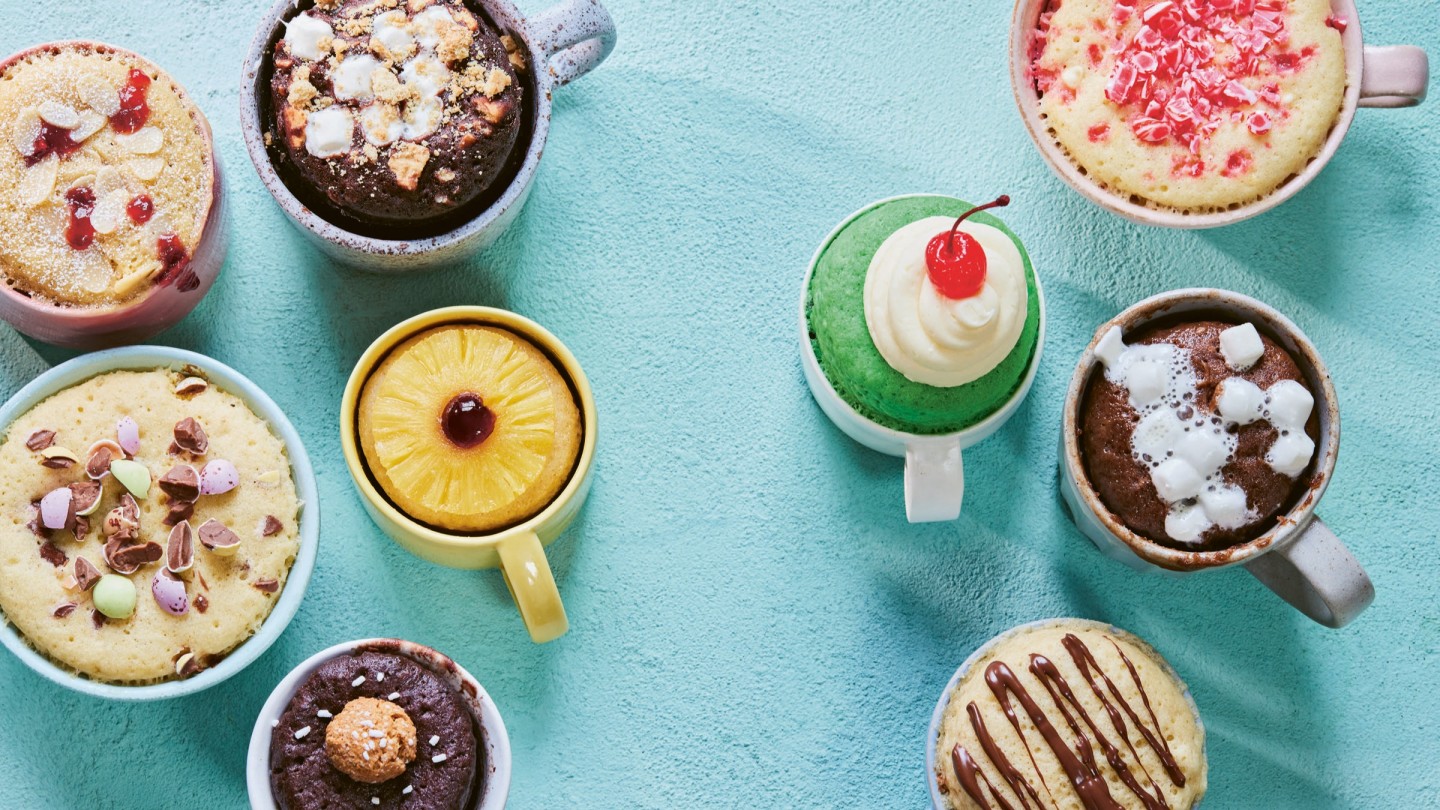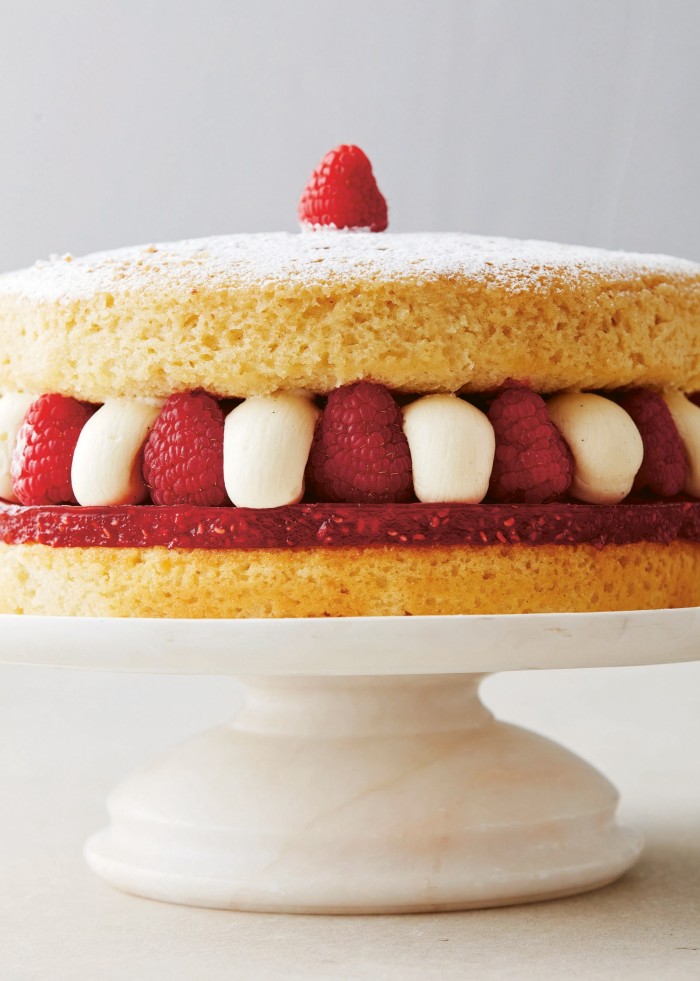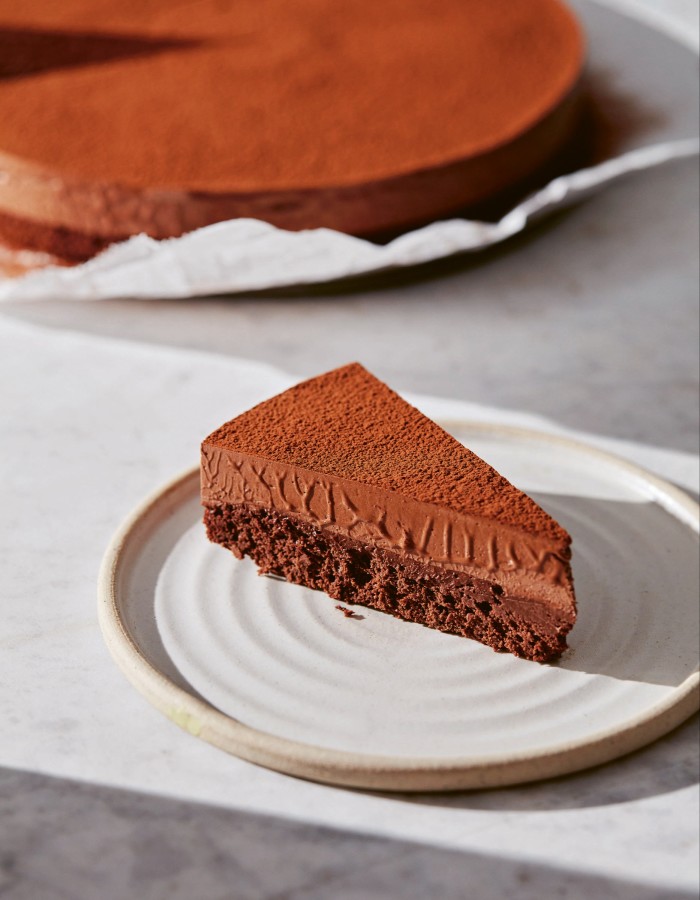Bake news! What’s cooking on the cake front?

Roula Khalaf, Editor of the FT, selects her favourite stories in this weekly newsletter.
I am currently engaged in my favourite pastime – watching someone else bake a cake that I get to eat. Harrods’ head pastry chef Philip Khoury is making his two-tone chocolate cake, a recipe using simple ingredients that is nonetheless radical because it contains no eggs or dairy and no unnecessary substitutes. It’s one of many reimagined plant-based recipes in his debut cookbook A New Way to Bake (Hardie Grant).

Khoury grew up in Sydney and trained at the award-winning Quay under chef Peter Gilmore before becoming Australian pâtissier Adriano Zumbo’s right hand. He joined Harrods in October 2018, noticed how few plant-based options there were and started developing his own. “Sometimes you have to bring an idea to life so people can taste it first,” he says. “I’d only reveal the bake was plant-based after the tasting was done and the product signed off.” He has since launched more than 20 plant-based cakes and pastries at the store.
Although his years as a development chef informed his book, A New Way to Bake is aimed squarely at home cooks. Khoury couldn’t rely on the specialised pectins, agar-agar variants or potato proteins he uses professionally. He also wanted the recipes to live up to his high standards as a chef, which meant steering clear of products such as margarine. “Margarine is not a high-quality product,” he says of its inconsistency and lack of provenance. “Why would I use it just to make something vegan?” Khoury focuses instead on ingredients that are “natural” or “in their purest form” such as unrefined oils, nuts and plant-based milks, reformulating classic recipes with their wide-ranging properties in mind.


Khoury’s solutions include using “tangzhong” cooked flour (an Asian technique for making soft breads) and sweet potato to make brioche. Both ingredients add moisture to make the dough pliable, while sweet potato recreates the buttery fragrance and golden hue we expect. He employs a “syrup method” to make biscuits; coconut oil and soya milk to produce whipping cream; and reinvents everything from banoffee pie to Victoria sponge.
FT Weekend Festival

FT Weekend Festival returns on Saturday September 2 at Kenwood House Gardens, London. Book your tickets to enjoy a day of debates, tastings, Q&As and more . . . Speakers include Henry Holland, Rosh Mahtani, Patrick Grant, Luke Edward Hall and many others, plus all your favourite FT writers and editors. Register now at ft.com/festival.
Often the removal of eggs and dairy results in a simpler recipe. The mousse top layer in his two-tone chocolate cake contains three ingredients: plant-based milk, sugar and dark chocolate. These are mixed and refrigerated then whipped. The high fat in the cocoa butter delivers the aerated moussiness you expect from eggs. The sponge base contains flour, sugar, extra-virgin olive oil, dark chocolate, plant-based milk and baking powder, whose leavening qualities render the fluffy texture that otherwise comes from beating butter and eggs. The cake is rich and elegant and among the best chocolate cakes I’ve ever tasted (vegan or otherwise).
“There is a huge demand for products that are plant-based but very few plant-based recipes use pantry staples,” says Khoury. “People end up using inferior substitutes like egg replacers. This is about stripping it back to basics in recipes that get results. It’s also for everyone else to have more options. There are plenty of plant-based ingredients that deliver a great bake.”

Another book promises baking solutions of an entirely different kind. A mug cake, in case you don’t know, is mixed and baked in the microwave, then eaten straight out of the mug. Books on the subject are big business in the US and Canada – students and parents of small children tend to be the biggest fans. As someone who loves cake and microwave hacks, I should be a devotee. But can a cake baked in 90 seconds measure up?
In Happiness in a Mug Cake (Hardie Grant), Kate Calder dispenses with orthodoxy in pursuit of flavour as only a onetime sceptic could. She uses oil instead of butter because it “has less taste but keeps the sponge moist”. She ramps up sugar and cocoa powder to amplify richness. And introduces fruit, nuts and alcohol in recipes such as apple crumble, gingerbread and espresso-martini cake to bolster taste and texture in what would otherwise be whole mugs of sponge.
Her double chocolate chip cake (the first of many I try) has me peering through the microwave door like a child as the sponge puffs up like soufflé. The actual cake is more substantial than that but ticks all my instant-gratification boxes. “Anyone with a sweet tooth who needs a fix,” says Calder of the target audience. You got me.
Comments